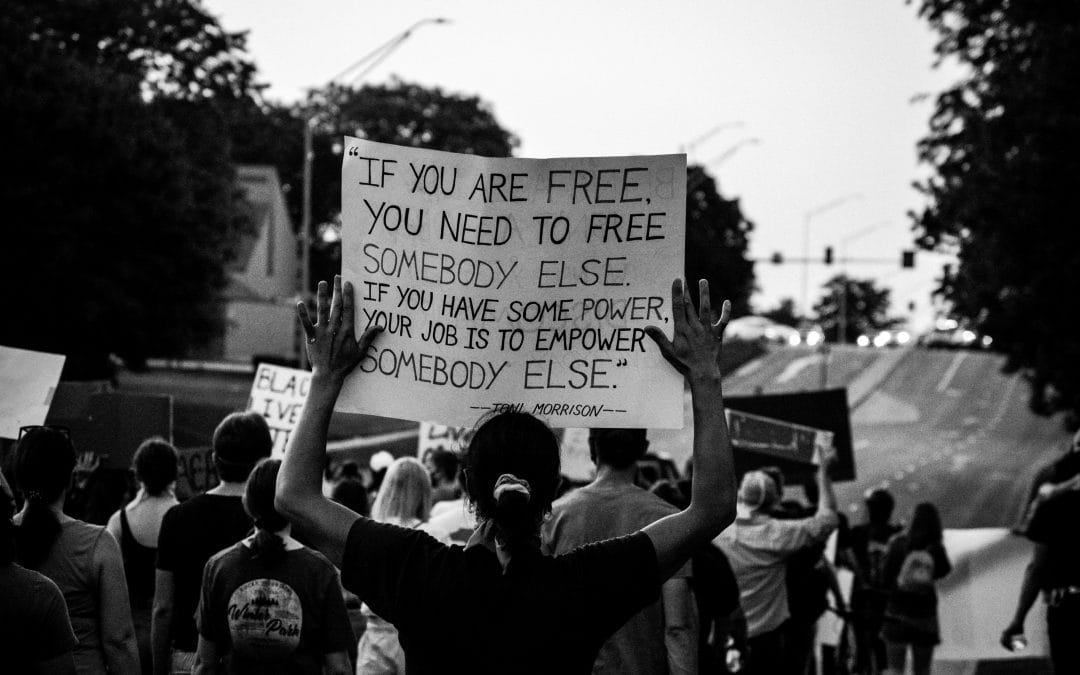Did you know that a stapler can provide insight into who you are? (Yes, really.)
This SEL ice breaker activity is called How Are You Different, and it involves using random objects for community building and fostering a collective empathy.
How?
One word: metaphors.
Our Building Intentional Communities Icebreakers and Team Builders to Build Social-Emotional Skills curriculum is centered on creating purposeful bonds.
Today’s post will concentrate on How Are You Different, an SEL activity participants use to achieve this goal.
But before we delve into that, let’s discuss…
How a Figure of Speech Evokes Empathy and Community Building
Metaphors are things that are symbolic of other things.
You’re probably familiar with metaphors and use a handful of them throughout your day. “Time is money” is one that everyone in this part of the world has heard.
But metaphors are not just colorful, succinct figures of speech that you hear and use at work. They can also evoke empathy and help community members understand each other better.
Maya Angelou uses the metaphor of a caged bird singing to express a Black person who feels joy in spite of their oppression. The symbolism of a winged creature forced to toil in a prison sears the systemic oppression of Black people onto the minds of the reader more than simply stating that “Black people are oppressed.”
SEL Ice Breaker Activity: How Are You Different
Now, let’s revisit today’s SEL activity: How Are You Different. We offer simple activities for relationship and community building. And we accomplish this with random objects (remember the stapler I mentioned earlier?), such as paper cups, paper clips, crumpled up paper, etc.
First, we ask participants to sit in a circle. Then we place these items in a large paper bag and pass the bag around the circle, one at a time, so each person can grab an object from the bag.
When each person has an object and the bag has made its way back to the first person, each person will share one way they are different from the item selected.
So, why would we center items that other people throw away for such a crucial exercise?
Because everyday items like the above are accessible to people of every race, class, gender, etc., which promotes inclusion.
Creating metaphors from these objects stirs your imagination and forces you to look at the familiar with new eyes and from new angles and to reconsider how you interact with the mundane.
We ask participants to avoid sharing obvious differences like, “This is a ceramic vase, and I’m a person.”
Instead, we encourage them to have fun, get creative, and look deeper. For example, a participant can say something like, “This vase is rigid and unyielding. However, I’m flexible and adaptable.”
Listening to how each person describes themselves and the metaphors they use can teach you a lot about other people. For example, the above example emphasizes “adaptability,” which suggests that this person values and may even seek out constant change within their lives.
Not only will participants bond over metaphors, after they watch their fellow teammates go through the same steps they’ll have the opportunity to bond over everyone’s awkwardness and initial fumblings and also share in each other’s joy when someone experiences a breakthrough.
How Are You Different also fosters vulnerability and self-awareness within each participant because you’re identifying and being honest about your strengths and flaws in front of a group of people.
Use Our SEL Ice Breakers Get Reacquainted With Yourself
Speaking of self-awareness, this SEL activity doesn’t just focus on building bonds with other people; it’s meant to deepen the relationship you have with yourself. For example, what metaphors did you create that surprised you? Were you aware of how far you could stretch your imagination? What was it like to compare yourself to an inanimate object? Would you open yourself up to similar exercises in the future?
One person’s trash is another person’s treasure is often considered a cliché, but it’s too apt not to mention in this example. We’re a society obsessed with innovation and the novel, but inspiration is often in plain sight — if you only bother to look.
Like our other SEL activities, How You Are Different encourages you to make a conscious effort to deviate from your everyday perspective, so that you can discover that even a stapler can be a poetic tool for self-reflection, bonding with others, and building a tight-knit community.









